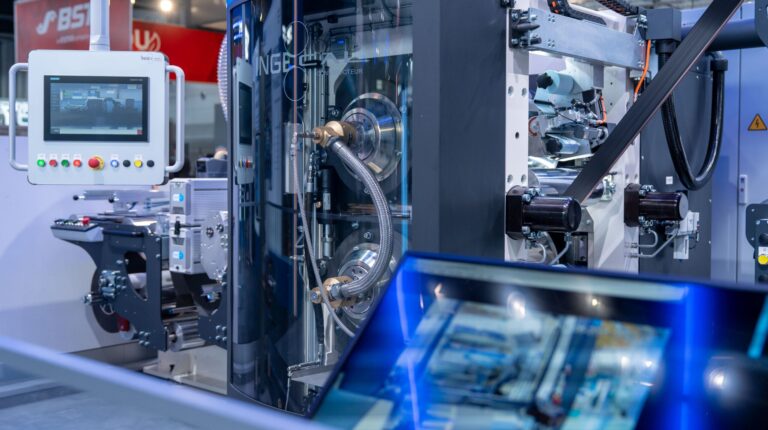Dürr and Grob have presented a concept factory for lithium-ion battery cells. The companies have been cooperating in the field of production technology for lithium-ion batteries since 2022.
“With our expanded portfolio of highly available machines and systems, we jointly cover almost the entire value chain for battery cell production with our own technologies,” said German Wankmiller, CEO of the Grob Group.
In addition to a classic production layout with wet coating, the partners have developed a concept factory with dry coating and the latest generation of Z-folder technology. “Our concept factory, and in particular the dry coating process, represents the next generation of battery cell production,” explained Dr Jochen Weyrauch, CEO of Dürr. “Thanks to powerful and innovative technologies, production requires 50% less space and energy. For our customers, this means significantly higher space efficiency and lower operating costs.”
Dry coating
The activated dry electrode process uses a dry-mixed active material. This powder mixture is pressed into a free-standing film using calender machines, which is then laminated onto both sides of the collector foil. Compared with wet coating, this eliminates the drying process as well as the recovery and treatment of solvents, thereby saving space, energy and costs.
After calendering, the coat weight can be measured directly, enabling better control of the coating thickness. The subsequent lamination onto the collector foil requires less force than calendering in the wet coating process, which means that the foil does not deform, improving its processability for downstream notching and stacking.
High-speed cell assembly
With the latest generation of Z-folders, which integrates the notching process, Grob aims to achieve higher performance with less space. The separator is guided over a few deflection rollers with very even and low web tension. With the use of the magazine buffer system for the electrodes, the system is said to achieve 95% availability.
Electrolyte filling with high pressure
Conventionally, the electrolyte is filled directly into the cells at up to 30 bar. Dürr has achieved a filling pressure that is two to three times higher than the current industry standard. The battery cells can be filled in a single step without residual gas, enabling precise dosing and shortening both the filling process and the subsequent penetration of the electrolyte into the active material.
End-to-end digitalization
The equipment is complemented by end-to-end digital mapping of the production process. A digital twin enables the simulation of the entire factory. The data from the simulation flows into the MES/MOM software of Dürr’s subsidiary, iTAC, which can be used to control and plan all production steps in battery manufacturing. Important functions here are traceability and quality analysis to avoid errors in production. This results in high overall equipment effectiveness.
Wet coating
Dürr has enhanced the performance and energy efficiency of its technologies for the wet coating process. This includes automation at the coating station and slot dies, which operate in a closed control loop to regulate layer thickness, reducing scrap and enabling faster production ramp-up.
In the drying stage, laser dryers enable up to 50% faster web speeds and support energy-efficient drying. For densifying the electrode coating, Dürr’s subsidiary, Ingecal, offers calendering machines with dynamic gap control. This system uses two sensors to measure roller distance with 0.5µm precision, ensuring consistent layer thickness with minimal applied force. These calenders are suitable for wet and dry coating processes.
In related news, RML Group has been awarded conformity of production (CoP) certification for its battery systems


